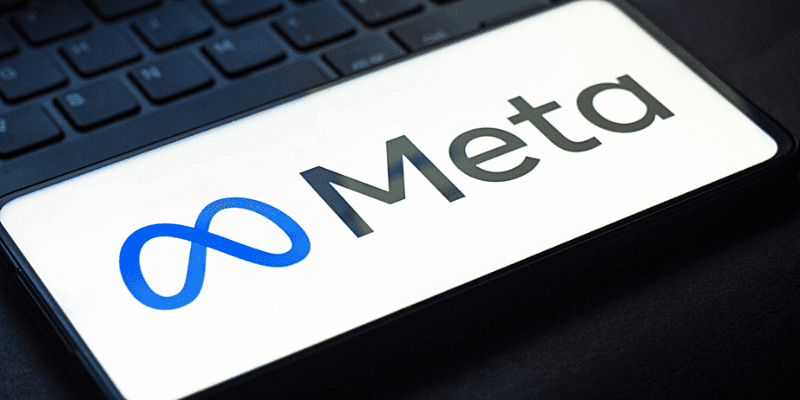
As Big Tech tightens its grip on AI, society faces a precarious balancing act between innovation and accountability — with algorithmic bias, power concentration, and weak oversight threatening to tip the scale.
The rapid proliferation of artificial intelligence is both exhilarating and deeply concerning. The sheer power unleashed by these algorithms, largely concentrated within the coffers and control of a handful of tech behemoths — you know, the usual suspects, the ones who probably know what you had for breakfast — has ignited a global debate about the future of innovation, fairness, and even societal well-being.
The ongoing scrutiny and the looming specter of regulatory intervention are not merely bureaucratic hurdles; they are a necessary reckoning with the profound risks inherent in unchecked AI dominance. It’s like we’ve given a few toddlers the keys to a nuclear-powered Lego set, and now we’re all nervously watching to see what they build (or break).
Let’s talk about how AI algorithms are reshaping society, who controls them, and why the stakes are far higher than most people realize. Then, we’ll close with my Product of the Week: a new Wacom tablet I use to put my real signature on digital documents.
Bias Risks in AI: Intentional and Unintentional
The concentration of AI development and deployment within a few powerful tech companies creates a fertile ground for the insidious growth of both intentional and unintentional bias.
Intentional bias, though perhaps less overt (think of it as a subtle nudge in the algorithm’s elbow), can creep into the design and training of AI models when the creators’ perspectives or agendas, whether conscious or subconscious, shape the data and algorithms. This can manifest in subtle ways, prioritizing certain demographics or viewpoints while marginalizing others.
For instance, if the teams building these models lack diversity, their lived experiences and perspectives might inadvertently lead to skewed outcomes. It’s like asking a room full of cats to design the perfect dog toy.
However, the more pervasive and perhaps more dangerous threat lies in unintentional bias. AI models learn from the data they are fed. If that data reflects existing societal inequalities (because humanity has a history of not being entirely fair), AI will inevitably perpetuate and even amplify those biases.
Facial recognition software, notoriously less accurate for individuals with darker skin tones, is a stark example of how historical and societal biases embedded in training data can lead to discriminatory outcomes in real-world applications, from law enforcement to everyday convenience.
The sheer scale at which these dominant tech companies deploy their AI systems means these biases can have far-reaching and detrimental consequences, impacting access to opportunities, fair treatment, and even fundamental rights. It’s like teaching a parrot to repeat all the worst things you’ve ever heard.
Haste Makes Waste, Especially When Algorithms Are Involved
Adding to these concerns is the relentless pressure within these tech giants to prioritize productivity and rapid deployment over the crucial considerations of quality and accuracy.
In the competitive race to be the first to market with the latest AI-powered feature or service (because who wants to be the Blockbuster of the AI era?), the rigorous testing, validation, and refinement processes essential to ensuring reliable and trustworthy AI are often sidelined.
The “move fast and break things” ethos, while perhaps acceptable in earlier stages of software development, carries significantly higher stakes when applied to AI systems that increasingly influence critical aspects of our lives. It’s like releasing a self-driving car that’s only been tested in a parking lot.
The consequences of prioritizing speed over accuracy can be severe. Imagine an AI-powered medical diagnosis tool that misdiagnoses patients due to insufficient training on diverse datasets or inadequate validation, leading to delayed or incorrect treatment. Or consider an AI-powered hiring algorithm that, optimized for speed and volume, systematically filters out qualified candidates from underrepresented groups based on biased training data.
The drive for increased productivity, fueled by the immense resources and market pressure these dominant tech companies face, risks creating an ecosystem of AI that is efficient but fundamentally flawed and potentially harmful. It’s like trying to win a race with a car that has square wheels.
Ethical Oversight Lags in AI Governance
Perhaps the most alarming aspect of the current AI landscape is the relative lack of robust ethical oversight within these powerful tech organizations. While many companies espouse ethical AI principles (usually found somewhere on page 78 of their terms of service), implementing and enforcing these principles often lag far behind the rapid advancements in the technology itself.
The decision-making processes within these companies regarding the development, deployment, and governance of AI systems are often opaque, lacking independent scrutiny or clear mechanisms for accountability.
The absence of strong ethical frameworks and independent oversight creates a vacuum where potentially harmful AI applications can be developed and deployed without adequately considering their societal impact. The pressure to innovate and monetize AI can easily overshadow ethical considerations, allowing harmful outcomes — such as bias, privacy violations, or erosion of human autonomy — to go unaddressed until after damage is already done.
The sheer scale and influence of these dominant tech companies necessitate a far more rigorous and transparent approach to ethical AI governance. It’s like letting a toddler paint the Mona Lisa. The results are likely to be abstract and possibly involve glitter.
Building a Responsible AI Future
The risks inherent in the unchecked dominance of AI by a few large tech companies are too significant to ignore. A multi-pronged approach is needed to foster a more responsible and equitable AI ecosystem.
Stronger regulation is a critical starting point. Governments must move beyond aspirational guidelines and establish clear, enforceable rules that directly address the risks posed by AI — bias, opacity, and harm among them. High-stakes systems should face rigorous validation, and companies must be held accountable for the consequences of flawed or discriminatory algorithms. Much like the GDPR shaped data privacy norms, new legislation — call it AI-PRL, for AI Principles and Rights Legislation — should enshrine basic protections in algorithmic decision-making.
Open-source AI development is another key pillar. Encouraging community-driven innovation through platforms like AMD’s ROCm helps break the grip of closed ecosystems. With the proper support, open AI projects can democratize development, enhance transparency, and broaden who gets a say in AI’s direction — like opening the recipe book to every cook in the kitchen.
Fostering independent ethical oversight is paramount. Creating ethics boards with the authority to audit and advise on AI deployment — particularly at dominant firms — can introduce meaningful checks. Drawing from diverse disciplines, these bodies would help companies uphold ethical standards rather than self-regulate in the shadows. Think of them as the conscience of the industry.


